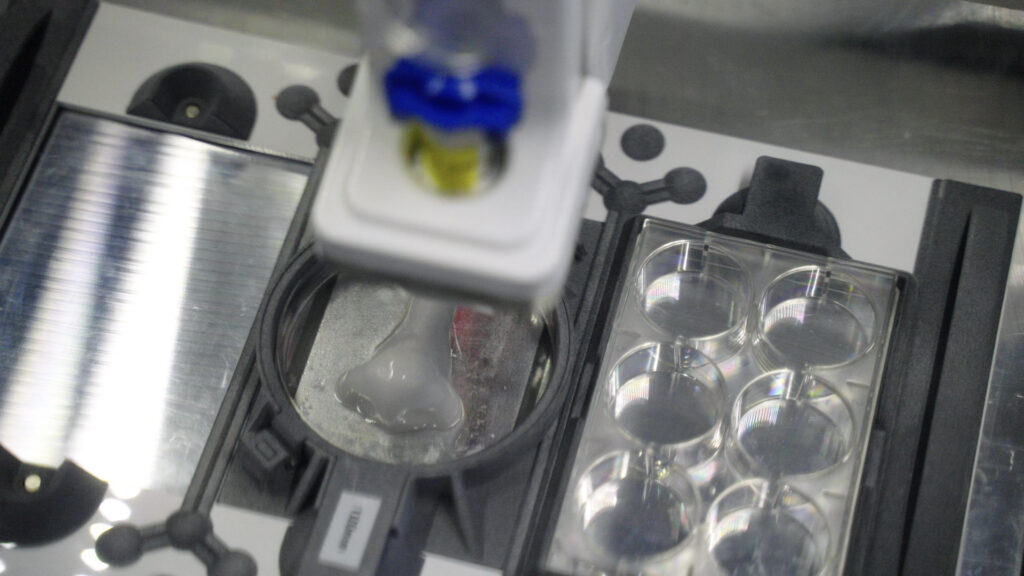The menisci are important cartilage structures located on each side of the knee joint, as they provide the required cushion and shock absorbance, enhancing knee stability and distributing the weight of the body on the lower leg. They can bear up to five times the body weight during daily activities! Due to their poor blood supply, meniscus injuries often do not heal on their own, leading to long-term complications. Meniscus tears are commonly caused by sports injuries and degeneration over time, and the current standard care involves knee arthroscopy procedures to trim the torn portion of the meniscus or the use of allograft scaffolds. However, these options do not provide a long-term solution, leading to a reduced time for more complex and expensive surgeries like a total knee replacement. Regenerative approaches are on the rise, including platelet-rich plasma therapy and autologous stem cell therapy, that provide temporary relief. 3D bioprinting is a promising biofabrication approach that allows for the fabrication of structures mimicking the native tissue’s architecture and biochemical organization. This technology relies on advanced 3D bioprinters and cell-laden bioinks to create precise and personalized meniscus scaffolds, effectively promoting long-term meniscus repair and regeneration.
Figure 1: Location of the meniscus. Reproduced from: Semba, J. A., Mieloch, A. A., & Rybka, J. D. (2020). Introduction to the state-of-the-art 3D bioprinting methods, design, and applications in orthopedics. Bioprinting, 18, e00070.
